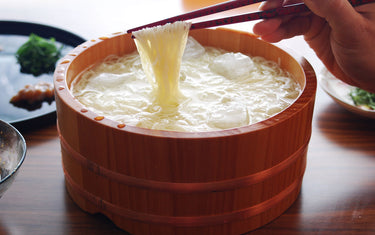In Japan, we have Obon Buddhist annual event. The purpose is to welcome our ancestors’ spirits that are believed to return to our families. Commonly, companies or shops are closed during the Obon period same as Easter.
Let’s focus on Obon in detail!
What is Obon?
Obon is a summer event to welcome the spirits of ancestors observed from August 10 to 15, or in some areas have different period. Commonly, companies or shops are closed during the Obon period which is regarded as National Holidays.
Usually, we conduct events to welcome the spirits of ancestors such as Buddhist memorial service, visiting to a grave or cleaning a graveyard.
The History of Obon
Although it’s not sure when Obon is started, it is said that Obon is derived from the Urabon, a Buddhist terminology and observed to perform religious services for ancestors from old times.
Urabon is a Buddhist even to perform religious services for ancestors and pray for the deceased.
Obon Period
Usually, Obon is observed from August 10 to 15 through, in some areas have different period.
To take an example, it is usually observed from July 13 to 16 in Okinawa or some parts of Kagoshima. This is because of the difference between old lunar calendar and new solar calendar the period is based on.
Since the Obon period has not been integrated even within Japan, you may feel vague. However, it can be unique customs of Japan which has cultural diversity by region.
Osonae (Food Offerings) for Obon
We have a habit to offer foods (called Osonae) to our ancestors during Obon. The typical Osonae is as follows.
Ohagi (Sticky Rice Cake Coated in Smashed Sweet Beans)

Ohagi is believed to drive away evil since it has sticky rice connected with good harvest and sweet beans connected with amulets. Being believed to bring luck, it is offered to ancestors.
It is said that Osonae which has been offered in such as Buddhist altar should be eaten soon after offerings. It is because that eating Osonae itself also contribute to holding a memorial service since Buddha bestow it as a bringer of good luck.
We generally call the food bestowed by Buddha Osagari.
Dango (Dumpling)

Dango is also one of the typical Osonae.
Why Dango has been offered since a very long time ago? The background tells us that Dango is easy to handle. Why Dango has been preferred as offerings? It’s supposed to easy in order for ancestors to eat. However, it’s because Dango has a long shelf life and is easy for us to handle or carry it actually.
Shoryoma (Conveyance for the Spirits of the Deceased)

Shoryoma is animal figures made from a cucumber and an eggplant. It has a role of conveyance used by the spirits of the deceased to come and go between this world and the another world.
It’s very easy to make the Shoryoma. Just stick wooden skewers through cucumbers or eggplants to make it look like a horse.
It’s commonly disposed without eating after offerings. There are several method to dispose of Shoryoma. For instance, disposing as general waste after sprinkling salt for purification, burying in the ground, or bringing it to temples for requiem services.
Somen (Fine Noodles)

Somen is generally offered with Shoryoma as it has a role of reins when ancestors ride it.
Let’s eat the Somen with family members after offerings as Osagari (hand-me-downs) from ancestors.
Tempura (Deep-Fried Food)

In some places such as Shinshu or Tohoku, they have custom to offer Tempura during the Obon period.
Why they offer Tempura? It’s not sure, but the following is one of the explanations for that. Shojin Ryori (Traditional Japanese Buddhist Cuisine) are generally served during Obon period. Since Shojin Ryori consumes a lot of vegetables, they need to make use of vegetables. So, they came to serve Tempura made with vegetables.
Obon can be called Japanese Easter
Obon, a Japanese traditional event is also holidays for many Japanese. It’s something like Easter in Europe and America.
If you would like to travel in Japan during the Obon period, please take thought for bad traffic jams or an availability at hotels since Japan is full of tourists during this period.
This article was originally published in July 2022. It has been updated in July 2023.













